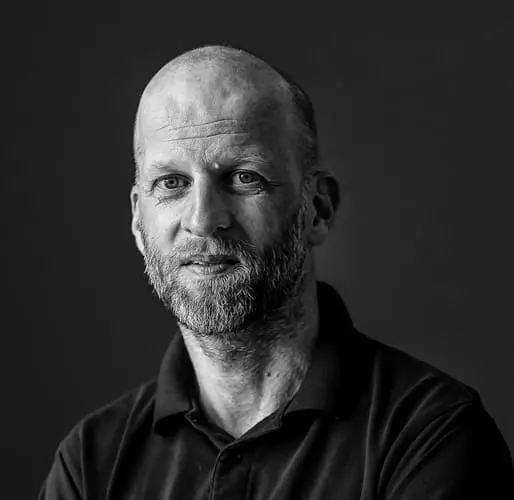Thoughts and Reflections on Orthodontics
In this guest blog, Dr. Bjorn Ludwig reflects on the current evolution of orthodontics. He effectively outlines several challenges and concludes with some intriguing ideas on how we can progress.
Björn Ludwig is an orthodontic specialist who operates a private practice in a small village in Germany. While his primary focus is clinical work, his strong interest in technology often captivates him. He actively pursues his goal of becoming a better researcher and writer by participating in various research projects and taking on editorial roles for academic journals. In addition to his passion for orthodontics, he enjoys cycling as a way to relax.

Reflections
Recently, I found myself reflecting on how our profession has evolved. Listening to discussions on the history and development of orthodontics, a scenario came to mind that felt all too relevant.
Just think about the following scenario:
- In the last four weeks, I’ve struggled with some heart problems—now imagine if the doctors didn’t offer me the best and most reliable treatment. Instead, they said, ‘We have some new fancy tool, which may only be 50% effective and, in your case, could lead to a less favourable outcome than the classic treatment strategy. But it’s ultra-hip and up-to-date, so we’ve limited ourselves to it.’
- I would most probably think they were crazy.
- But to some extent, our profession is increasingly heading in that direction—not putting the best, most reliable, and most efficient treatment strategy upfront.
- No, we often take the trendiest approach.
- Luckily, the difference may not reach the best occlusion, smile, or perfect class I.
- But regarding my recent personal health experience, I feel very sad and, to some extent, guilty that we, as a medical profession, act so paradoxically and perhaps even unfairly and unethically.
I wish my doctors were different.
The greatest challenge our profession faces today is the widespread influence of social media and corporate-driven orthodontics. When I began my training, the professionals I admired were distinguished by their excellence in clinical practice. They were well-known for presenting meticulously documented cases, publishing high-quality research in reputable journals such as AJODO, and delivering informative, ethical, and relevant lectures. These individuals established a standard grounded in knowledge and integrity.
In contrast, today’s orthodontic “superstars” seem to be defined less by their clinical skills or research expertise and more by the number of followers they have on social media. This shift is concerning because, when I look back at cases from 30 years ago, I often notice that those treatments, even without today’s high-tech advancements, were somehow more effective and complete. It feels as though we are losing something essential in our pursuit of the latest trends..
My advice
My advice, which I strive to follow, is simple yet crucial:
Respect the fundamental principles of orthodontic treatment planning. Stay within the boundaries of biological limitations, recognising that each patient’s unique physiology should guide us, not our desire to try out the newest technology.
Maintain an ethical approach—don’t reach for high-tech solutions simply to dazzle patients or boost the bottom line. Instead, use evidence-based practices and draw from relevant literature to inform your decisions.
Above all, remember that our work is about the patient and the treatment outcome. Our responsibility is to ensure that these remain at the forefront of every decision we make.
Conclusion
- I have immense hope for digital orthodontics and don’t want to miss it.
- But it’s far more than just plastic trays to correct teeth—it has opened many possibilities to invisible areas like clefts.
- Don’t trust AI or digital technology without questioning; we are responsible, not the technology, for treating patients.
- Any innovation requires critical, honest review. Don’t push technology to impress; it’s all about the patient, and knowledge is vital.
- We need academic education and sound science. Technology creates tools, but the research of the last 100 years is our superpower.
- What you can’t see, you can’t treat—please learn to see, train your eyes, and reevaluate even your best cases.
- Learn why things went well and dare to prove yourself wrong – that’s the essence of being an academic and scientist.
- As the world becomes overpopulated and economic and environmental concerns rise, let’s work together to balance technology and frugal, non-tech options.

Björn Ludwig is a orthodontics specialist who runs his private practice in a small village in Germany. He also holds academic positions at two institutions: the University of Homburg/Saar in Germany and the Department of Orthodontics at the Institute of Odontology, Sahlgrenska Academy, University of Gothenburg in Sweden.
Stop the search. We have found an honest man in Björn Ludwig. I have never heard a metaphor of where our profession is than his comparison to his heart problem. Everyone who wants to be an orthodontic clinician should be reading this.
Larry W. White, DDS, MSD, Dallas, TX
Great advice chief!
Absolutely wonderful post !! Thank you, Dr. Ludwig for expressing what so many of us feel. Every student should read your post and take it to heart.
I greatly appreciate your concern for the profession. I also appreciate your recommendations. They are all important. I wish I could believe that just saying orthodontists should essentially be better would work. I think money should be the major consideration as to why our profession is in the state it is. I am not acutely aware of the market for orthodontists in Europe. However, in the U.S., there are generally more dentists and orthodontists per capita than ever in history. There are more dental schools and orthodontic residencies than ever in history. Increasing the number of spots available for students decreases selectivity for both students and instructors. Tuition is higher than ever while orthodontic fees have stagnated. The result is more ill-prepared dentists/orthodontists than ever burdened with more debt than ever. When financial difficulties increase, the morally deficient will find a way to maintain their standard of living. Perhaps the firsts step towards recovery for the profession is admitting there is an ethics problem. At the same time admit that it is a disgrace that excellent and ethical orthodontists are struggling financially. Second, address the reasons for the financial difficulties that are exacerbating problem #1. Third, admit that, at least in the US, the market is intentionally being flooded with dentists and orthodontists and that by doing so, everyone (patients and providers) are harmed by this. Fourth, I know people (especially those trying to flood the market with dentists) will lose their minds when I say this but, here it goes. There needs to be an indefinite freeze on the accreditation of new dental programs while the process of accreditation is reviewed and greatly strengthened.
Amen to all of the above. Thanks for sharing!
Dr. Ludwig, I appreciate your thoughtful insights, particularly regarding the emphasis on achieving the best clinical outcomes for our patients. As the CEO of an orthodontic marketing agency and retired orthodontist, I have the privilege of talking to orthodontists about issues they face every day. It’s clear that delivering high-quality care is paramount in fostering patient trust and improving health results. However, here is our challenge. How do we provide our best and finest clinical care and also attract enough new patients to remain financially viable? It is also essential to consider the desires and broader market environment in which we operate—the appeal of shorter treatment times, more cosmetic appliances, etc.
While we may strive for the most ideal clinical outcomes, our ability to attract and retain patients is also crucial. Without a steady flow of patients seeking our services, even the most effective treatments can go unnoticed and unused. To me, our challenge lies in finding a balance between providing the best clinical treatment modality and market viability.
By understanding and responding to the needs of our community, I am hopeful that we can create a scenario that not only showcases our clinical capabilities but also meets the demands of potential patients. This dual focus will enable us to enhance both patient care and our practice’s sustainability.
3-year-olds on their iPads are nowadays driving beautiful hyperrelastic 3D cars. However, these children can’t read and write. I think a similar situation is now happening in orthodontics…
This is an excellent post, balancing the desire to ‘ do more’ , with the critical approach of ‘does it work’.
I do think we need mechanisms to move the excellence from past into today’s format of social media, like taking the VHS of previous and converting them to HD files.
Thank you Björn, hope you are better now
Very nice post Björn, well written and perfectly describes what we are going through, I used see beautiful cases on social media with perfect finishing but not anymore, a lot has changed after the pandemic since many has moved to aligners to treat all the cases
Hope you are better now
Thanks for the thoughts Björn. Best wishes to you getting back to full strength with the heart condition.
Actually, the innovation like Invisalign, nitinol, SWA etc and youtube teachers videos have dealt an irreparable blow to orthodontic treatment, as even most of the general dentists , who used to be scared from wire bending decades ago, have suddenly become certified orthodontists and started practicing as consultant visiting orthodontic specialist. So, now the postgraduate orthodontic specialist are just for academic significance, while untrained certified orthodontists are in-:thing for public , as they are easily and cheaply available
Practicing for 40 years I’ve seen alot of changes in our profession. The past 10-15 years have mostly been discouraging. More and more orthodontics is becoming a consumer and money-driven commodity. Advances in technology have allowed true orthodontic specialists to aim for even better diagnosis and treatments. Unfortunately it has also been used by the untrained and uneducated to dumb down treatment into a simplistic, cookbook modality. This has been extended into “pay for play” residences, social media driven marketing and corporations whose allegiance is to shareholders and investors.
It’s hard to see the genie being put back into the bottle. If you want to see the future it’s usually wise to follow the money.
That’s a sobering thought for the future of clinical excellence in orthodontics.
A. Joel Gluck
Nashville, TN
Sincere and honest thinking!
Not to miss post!
After a long time sober sense from small dedicated clinical professional!
Hope the new found ‘social media’ guru’s are listening!
Also their followers with a herd mentality!
The challenge to our profession is not from these gurus! But it’s more the herds!
Our “profession” is dentistry; instead, orthodontics is our “specialty.”
As long as nobody dies, there is no day of reckoning. I see no real hope. Orthodontics is what it is.
Very insightful my friend! However, I fear that your comments are not reaching the right crowd. Those who subscribe to this blog are interested in quality and ethical treatment practices, like you propose. Those who are interested in pushing the latest “shiny object” they find probably aren’t reading your comments. And if they are, it is likely falling on deaf ears. I hope I’m wrong! Keep trying.